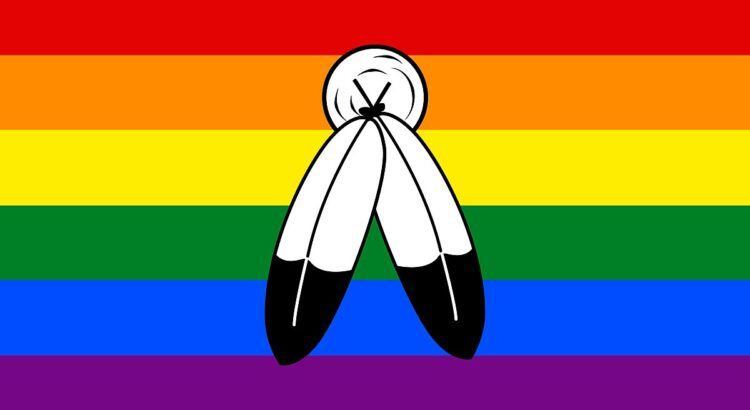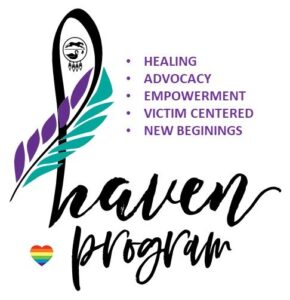Two Spirit is now included in the umbrella term of LGBTQ2. The following excerpt from an article on the Adaya Rising website provides a simple overview of the origination of the term.
What Does the 2 in LGBTQ2 Stand For?
Have you ever asked yourself what some of the letters in LGBTQ2 (actually) stand for? Yes? Then you are not alone! Broader queer communities are constantly working on their “visible inclusiveness” by adding letters to the LGBT acronym and it can be hard to keep up. We are taking the opportunity in PRIDE MONTH to decode some of it:
L-esbian,
G-ay,
B-isexual,
T-ransgender,
Q-ueer.
Sometimes I for Intersex, and A for Asexual are included. To be even more inclusive, the acronym is sometimes finished off with a +. The plus represents all members of the community that have not been specifically mentioned. These may include pansexual or nonbinary people.
In North America and especially in Canada, we will sometimes find a number in the acronym. When I moved to Canada, I was curious to find out what the 2 stands for. I learned that it means: two-spirit.
Two-spirit is an umbrella term that is used nowadays as a self-description by, or reference to, some Native (North) American or First Nations people, who form a third gender in their community.
You may rightly ask yourself, “but why the number 2?”. The 2 in two-spirit refers to the combination of male and the female spirits. While a woman is perceived as having a female spirit, and a man as having a male spirit, a two-spirit person embodies a fusion or synthesis of the latter. Thus, it forms a third gender.
Translated into non-indigenous terminology, two-spirit describes an identity and/or sexual orientation somewhere akin to lesbian, gay, bisexual, transgender, non-binary, and queer. However, these translations do not do complete justice to the term. Two-spirit encompasses indigenous worldviews specific to their communities, history, and culture. It is more than a gender identity or a sexual orientation. It also involves certain societal roles, such as healer, artist and storyteller. Sometimes a role of sacred ritual is also involved. There are differences from nation to nation and it is not used by all queer people in Native North America.
The term two-spirit was created at the Indigenous lesbian and gay international gathering in Winnipeg in 1990. The primary intent and purpose of this new term was to replace offensive and outdated terms. Another purpose was to create a Pan-Native term that could be used when addressing wider English-speaking audiences, unfamiliar with the indigenous languages of North America.
With more than 500 surviving Native American Nations, including Cree, Lakota, Ojibwe and Navajo, concepts around gender and sexual orientation are diverse, as are indigenous terminologies.
Do you find this confusing? Well, maybe at first glance. Yet, it is just more proof of how diverse the rainbow is in its entirety. Yet, we can all come together and celebrate ourselves during Pride (but hopefully not only now!). Just a little reminder: the two-spirit concept belongs to the rich cultural heritage of the many nations of indigenous peoples who have inhabited “Turtle Island” (North America) prior to colonialism and through until today.
For more than 400 years, Native Americans have been subjected to colonization, exploitation, and discrimination. The term two-spirit is thus reserved for members of these native communities. It is not a term that non- indigenous queer people may use to describe themselves.
The term two-spirit has been subjected to certain criticism and debate (like every letter in the acronym). Yet it has spread widely and is largely accepted as being inclusive of Native North American queers in their uniqueness (as opposed to non-Native North American queers). In Canada, the 2 is now ubiquitous, and LGBTQ2 has become the default acronym in referring to the queer community.
… Language matters. Language colonizes and de-colonizes. By using language consciously, we can empower certain voices instead of silencing them.
The full article with additional links can be found:
https://www.aadyarising.net/blogs/what-does-the-2-in-lgbtq2-stand-for
I have much to learn about gender. What I thought was simple is not. I hope you will take 5 minutes to learn from Ma-Nee Chacaby. Ma-Nee is a Two- Spirted author and Indigenous elder who shares some of her personal story. If you would like to share a thought with me regarding the article and/or video I would love to place your name in a drawing to win a prize.
https://www.youtube.com/watch?v=juzpocOX5ik
HAVEN does not discriminate based on race, color, national origin, religion, sex, disability, or age.
HAVEN advocates are here to help!
Thanks for reading!





